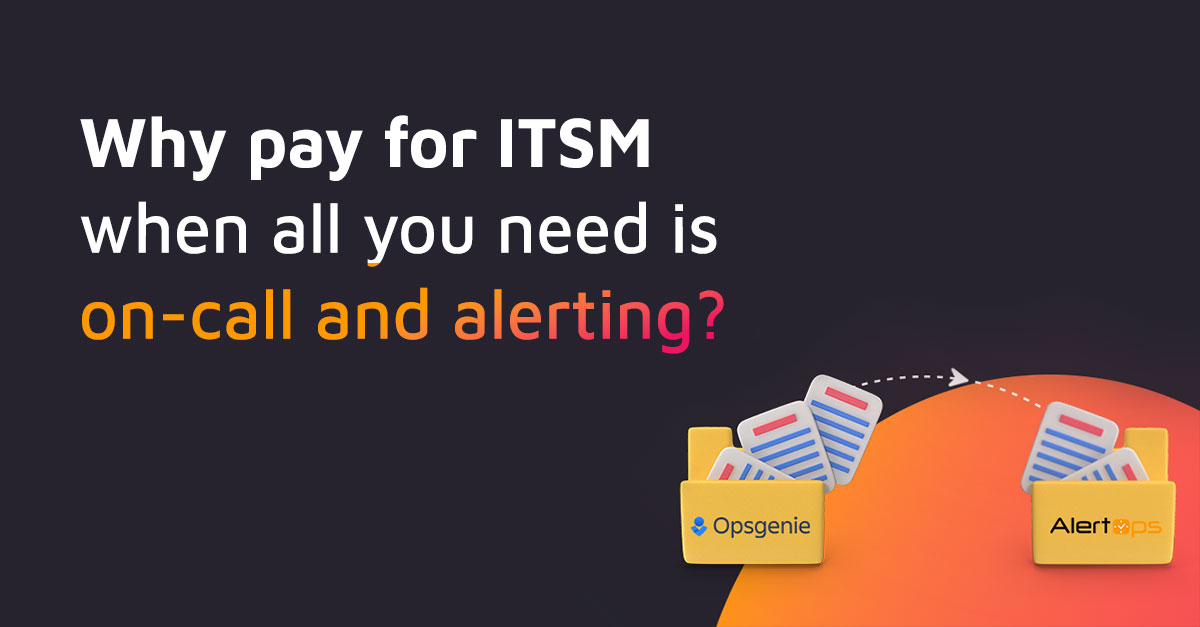Incident management is a top priority for many businesses, yet few companies understand exactly what it takes to choose the right incident management tool.
Although many incident management tools/system providers claim to offer the latest and greatest technologies, there is no one-size-fits-all incident management solution. As such, businesses need to perform extensive research before they buy and implement an incident management system. Failure to learn about a tool’s pros and cons may cause long-lasting problems for a company, its employees and its customers.
We understand the challenges associated with choosing the right incident management tool and recognize that dozens of incident management systems are available, each offering a wide range of capabilities and features.
In this guide, we’ll examine incident management tools, how they work, and their benefits for businesses. We’ll also explore key criteria to consider as you browse incident management systems and provide tips to help you make an informed purchase decision.
What Is Incident Management?
Incident management refers to a business’ activities to identify, analyze and resolve IT hazards.
In most instances, a company will use an incident management team that works in conjunction with a service desk. If a service is disrupted or stops working, the service desk generally serves as the first point of contact. Then, the service desk will communicate with an incident management team to find ways to restore the affected service as quickly as possible.
Oftentimes, incident management is mistaken for incident response, but it is essential to note there are many notable differences between the two.
- Incident management focuses on doing whatever it can to help a company overcome a service disruption, incident response performs root cause analysis of an incident.
- Incident management may perform a temporary fix to repair an interrupted service, while incident response will investigate an incident, find out why it happened and act accordingly. This prevents a one-time incident from becoming a recurring problem.
Believe it or not, incident management may dictate the immediate and long-term success of a business, and perhaps it is easy to understand why. If a company allocates the necessary time and resources to deploy a reliable incident management system, it can reduce the risk of downtime that otherwise can damage a company’s brand reputation and bottom line.
Perhaps most important, effective incident management helps a company lower the time and costs associated with managing both minor and critical IT incidents.
Why Does Your Business Need an Incident Response System?
To better understand the importance of incident management, let’s consider the following:
- A Customer Think 2021 Report – Indicated the median loss for major incidents is at $47 million.
- Facebook – March 2019 Outage cost the company 6$ Million per hour in lost revenue.
- Costco Wholesale – November 2019 Thanksgiving Outage cost the company $687,500 per hour in lost sales.
- Amazon – July 2018 Prime Day Outage cost the company $2Million per hour in lost sales.
- Fastly – June 2021, Cyber Attack entailed a 19% nosedive in stock value.
It also is important to note that the impact of downtime extends beyond a company’s bottom line. In fact, downtime can affect businesses in a number of areas, including:
Equipment: An outage that goes unaddressed for an extended period of time may cause equipment damage. Therefore, a company may need to spend hundreds, thousands or millions of dollars to repair or replace defective equipment following an outage.
Recovery: If a company lacks a disaster recovery strategy, it may be forced to act quickly to rebound after an outage. At this point, a business may need to prioritize its recovery efforts – rather than its customers – to become fully operational once again.
IT Productivity: During an outage, IT professionals may lack access to systems and tools that they need to get their jobs done. And after an outage is resolved, these IT professionals may be forced to scramble to catch up.
When it comes to incident management, why should a business be forced to leave anything to chance? Instead, a company can implement a user-friendly and comprehensive incident management system to mitigate the effects of IT incidents faster than ever before.

What to Look For in an Incident Management System
There is no shortage of incident management tools at a company’s disposal. However, no two incident management systems are exactly alike, and it pays to conduct in-depth research to find the right tool based on your company’s needs.
Ultimately, there are several criteria to consider relative to incident management tools, and these include:
- Agile Delivery Processes: Integrates with monitoring and DevOps tools, allowing you to view all of your critical alerts in one place.
- Automated On-Call Alerting: Ensures you can automate incident management notifications to entire teams or key people based on severity level, vacation policies, etc.
- Enterprise Reporting: Empowers you with advanced reports, dashboards and data export capabilities to help you view incident management performance within teams and across an enterprise.
- Major Incident Analytics: Monitor incident lifecycles with reports and analytics to improve incident management procedures and reduce mean time to resolution.
- Manual Paging: Allows you to have the flexibility to create conference bridges and send out messages to large groups simultaneously while trimming minutes to resolution.
- Mobile Incident Management: Boasts a mobile app that enables incident management team members to open, assign and respond to alerts on an Android or iOS device.
- Multiple Alert Types: Delivers alerts via email, push notifications and SMS.
- Open API: Offers the ability to build custom integrations for any system.
- Real-Time Collaboration: Enables the right people to receive incident notifications, leading to faster and more effective incident management.
- Rich Notifications: Features graphs, images or links and/or provides a direct link to a conference bridge that includes incident details.
- Seamless Integrations: Includes dozens of pre-built integrations for monitoring, chat and help desk systems.
Let’s face it – even though businesses want to stop incidents, doing so may prove to be virtually impossible. Thankfully, an incident management tool that features the aforementioned capabilities will make it easy to manage IT incidents before they get out of hand.
Tips for Choosing the Right System for your business
The incident management system that works well for one business may not match the needs of another.
For example, a hospital may require an incident management system that enables dozens of incident management team members to receive instant notifications at any location, at any time. On the other hand, a mid-sized retailer may require an incident management system that encourages incident management team members to work together to identify and address server issues before they lead to potentially devastating outages.
Clearly, the right incident management system may vary from company to company and industry to industry. But, there are several key attributes that top-of-the-line incident management systems have in common:
- Ease of Use: No one should be forced to allocate significant time and resources to deploy an incident management system and teach others how to use it. But if a company implements a user-friendly incident management system, its entire incident management team can enjoy the benefits of this system from day one.
- Flexibility: There is no need to work with an incident management system provider that fails to account for your business’ unique challenges. If you collaborate with an incident management system company that learns about your business and its incident management needs, you should have no trouble maximizing the value of your investment by customizing it to your needs.
- Mobility: Anywhere, anytime access to incident data is paramount. By utilizing an incident management system provider that offers best-in-class mobility features, you can ensure your incident management team can receive critical alerts on smartphones and tablets – even in areas where no Wi-Fi connectivity is available.
- Scalability: An incident management team may be small – for now. As your business expands, it likely needs an incident management system that scales according to its growth. This means it usually is a good idea to choose an incident management system provider that will work with you to support your company’s rapidly increasing incident management needs.
- Security: A data breach that exposes sensitive corporate or consumer data is unacceptable. If you leverage an incident management system that offers the right blend of data security and data sharing, a company can minimize the risk that its sensitive data could fall into the wrong hands.
Lastly, don’t forget to select an incident management system provider that prioritizes communication. Because if your incident management company is unavailable to provide support during a major incident, your business, its customers and its employees could suffer the consequences.
Check Alertops for More Information.
____________________________________________________________________________


